Jean-Paul Kneib
Supervisory Coordination of Robotic Fiber Positioners in Multi-Object Spectrographs
Oct 10, 2022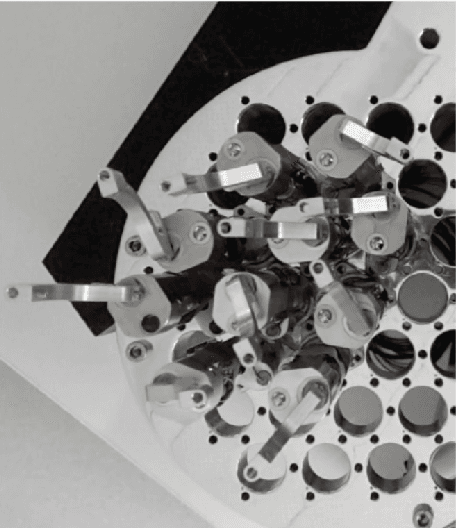
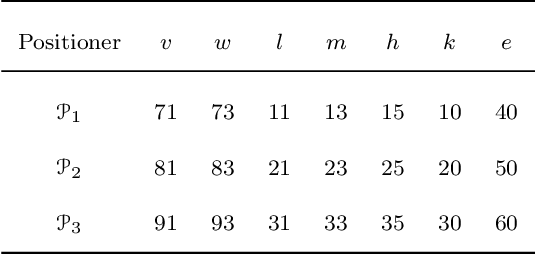

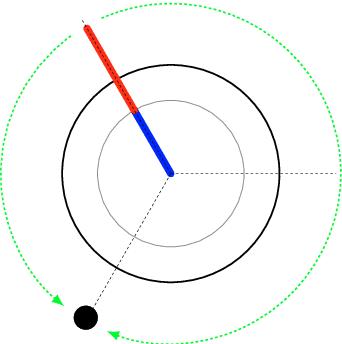
Abstract:In this paper, we solve the complete coordination problem of robotic fiber positioners using supervisory control theory. In particular, we model positioners and their behavioral specifications as discrete-event systems by the discretization of their motion spaces. We synthesize a coordination supervisor associated with a specific set of positioners. In particular, the coordination supervisor includes the solutions to the complete coordination problem of its corresponding positioners. Then, we use the backtracking forcibility technique of supervisory control theory to present an algorithm based on a completeness condition to solve the coordination problem similar to a reconfiguration problem. We illustrate the functionality of our method using an example.
Learning convergence prediction of astrobots in multi-object spectrographs
Oct 05, 2022Abstract:Astrobot swarms are used to capture astronomical signals to generate the map of the observable universe for the purpose of dark energy studies. The convergence of each swarm in the course of its coordination has to surpass a particular threshold to yield a satisfactory map. The current coordination methods do not always reach desired convergence rates. Moreover, these methods are so complicated that one cannot formally verify their results without resource-demanding simulations. Thus, we use support vector machines to train a model which can predict the convergence of a swarm based on the data of previous coordination of that swarm. Given a fixed parity, i.e., the rotation direction of the outer arm of an astrobot, corresponding to a swarm, our algorithm reaches a better predictive performance compared to the state of the art. Additionally, we revise our algorithm to solve a more generalized convergence prediction problem according to which the parities of astrobots may differ. We present the prediction results of a generalized scenario, associated with a 487-astrobot swarm, which are interestingly efficient and collision-free given the excessive complexity of this scenario compared to the constrained one.
Astrobotics: Swarm Robotics for Astrophysical Studies
Oct 05, 2022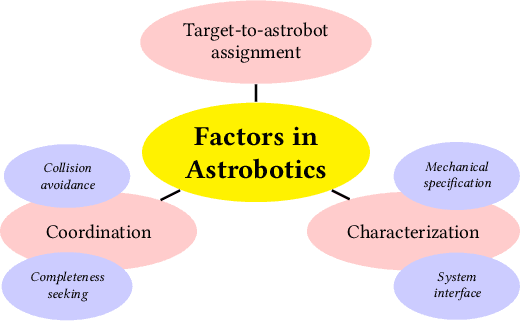
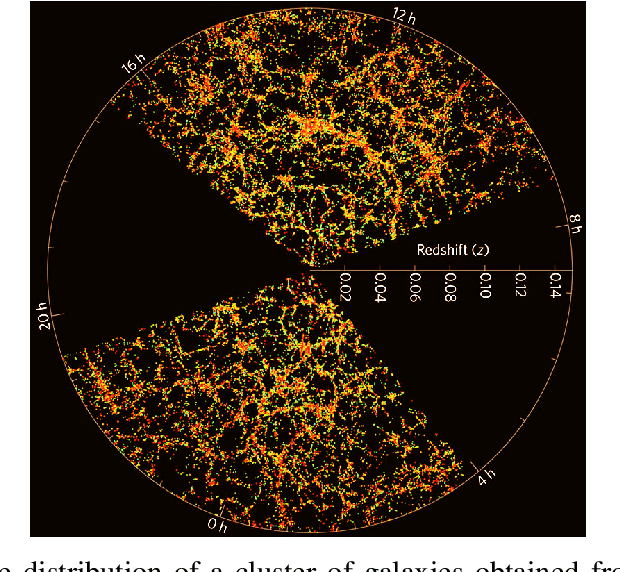
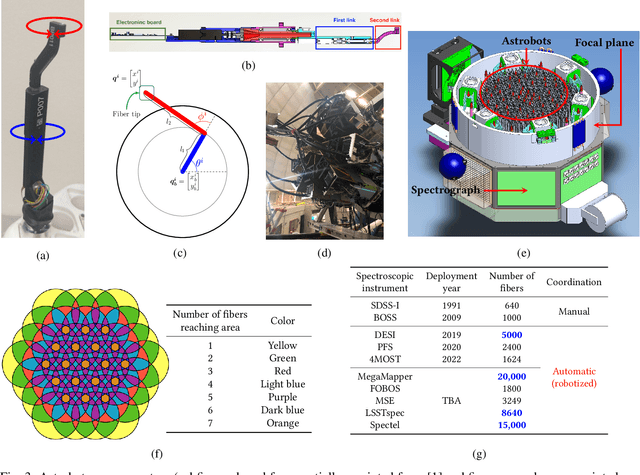
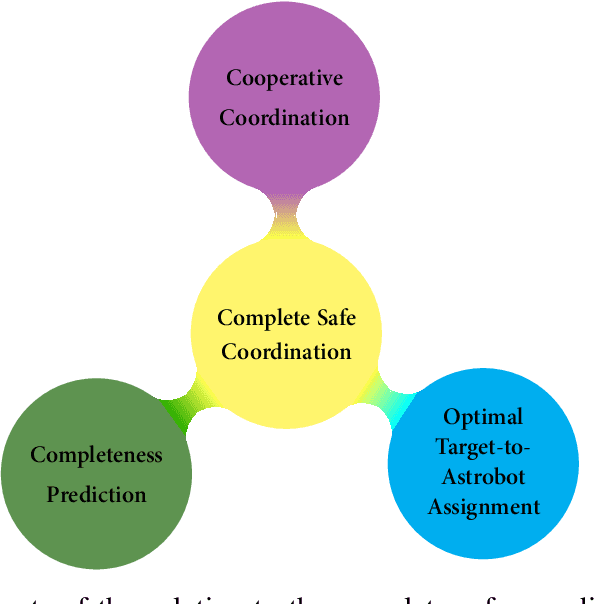
Abstract:This paper introduces the emerging field of astrobotics, that is, a recently-established branch of robotics to be of service to astrophysics and observational astronomy. We first describe a modern requirement of dark matter studies, i.e., the generation of the map of the observable universe, using astrobots. Astrobots differ from conventional two-degree-of-freedom robotic manipulators in two respects. First, the dense formation of astrobots give rise to the extremely overlapping dynamics of neighboring astrobots which make them severely subject to collisions. Second, the structure of astrobots and their mechanical specifications are specialized due to the embedded optical fibers passed through them. We focus on the coordination problem of astrobots whose solutions shall be collision-free, fast execution, and complete in terms of the astrobots' convergence rates. We also illustrate the significant impact of astrobots assignments to observational targets on the quality of coordination solutions To present the current state of the field, we elaborate the open problems including next-generation astrophysical projects including 20,000 astrobots, and other fields, such as space debris tracking, in which astrobots may be potentially used
Experimental evaluation of complete safe coordination of astrobots for Sloan Digital Sky Survey V
Dec 19, 2020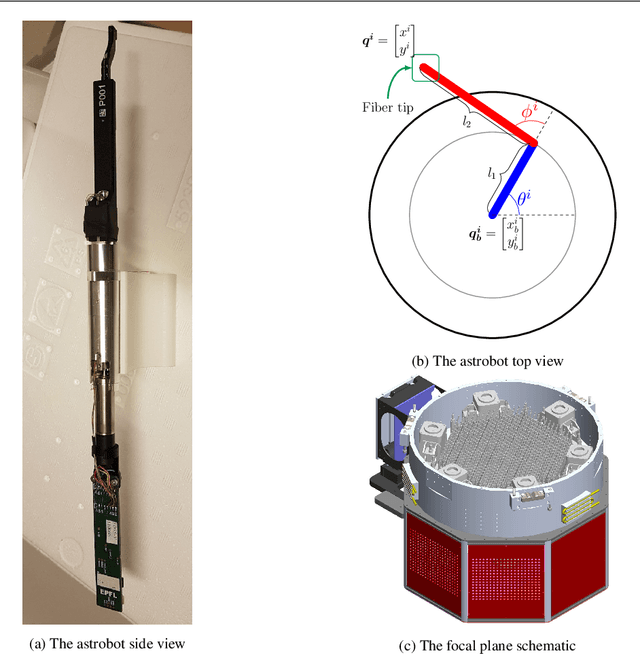

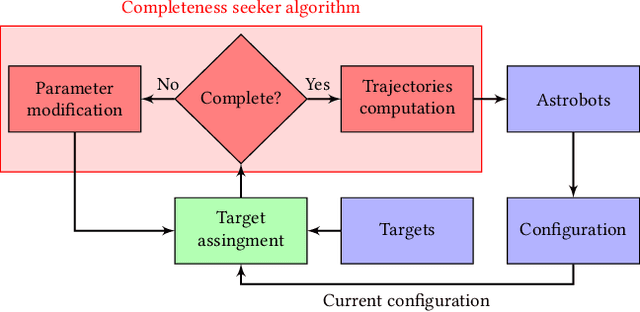
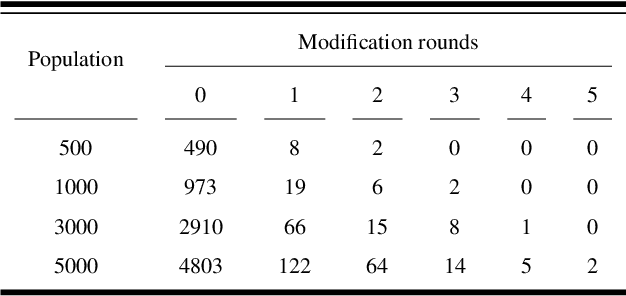
Abstract:The data throughput of massive spectroscopic surveys in the course of each observation is directly coordinated with the number of optical fibers which reach their target. In this paper, we evaluate the safety and the performance of the astrobots coordination in SDSS-V by conducting various experimental and simulated tests. We illustrate that our strategy provides a complete coordination condition which depends on the operational characteristics of astrobots, their configurations, and their targets. Namely, a coordination method based on the notion of cooperative artificial potential fields is used to generate safe and complete trajectories for astrobots. Optimal target assignment further improves the performance of the used algorithm in terms of faster convergences and less oscillatory movements. Both random targets and galaxy catalog targets are employed to observe the coordination success of the algorithm in various target distributions. The proposed method is capable of handling all potential collisions in the course of coordination. Once the completeness condition is fulfilled according to initial configuration of astrobots and their targets, the algorithm reaches full convergence of astrobots. Should one assign targets to astrobots using efficient strategies, convergence time as well as the number of oscillations decrease in the course of coordination. Rare incomplete scenarios are simply resolved by trivial modifications of astrobots swarms' parameters.
* https://link.springer.com/article/10.1007/s10686-020-09687-4
SDSS-V Algorithms: Fast, Collision-Free Trajectory Planning for Heavily Overlapping Robotic Fiber Positioners
Dec 08, 2020

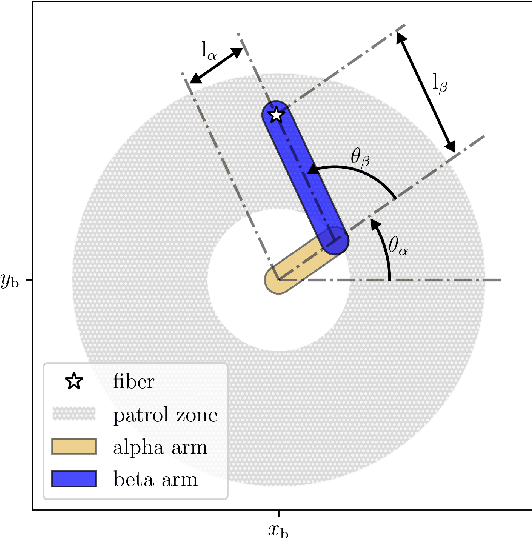

Abstract:Robotic fiber positioner (RFP) arrays are becoming heavily adopted in wide field massively multiplexed spectroscopic survey instruments. RFP arrays decrease nightly operational overheads through rapid reconfiguration between fields and exposures. In comparison to similar instruments, SDSS-V has selected a very dense RFP packing scheme where any point in a field is typically accessible to three or more robots. This design provides flexibility in target assignment. However, the task of collision-less trajectory planning is especially challenging. We present two multi-agent distributed control strategies that are highly efficient and computationally inexpensive for determining collision-free paths for RFPs in heavily overlapping workspaces. We demonstrate that a reconfiguration path between two arbitrary robot configurations can be efficiently found if "folded" state, in which all robot arms are retracted and aligned in a lattice-like orientation, is inserted between the initial and final states. Although developed for SDSS-V, the approach we describe is generic and so applicable to a wide range of RFP designs and layouts. Robotic fiber positioner technology continues to advance rapidly, and in the near future ultra-densely packed RFP designs may be feasible. Our algorithms are especially capable in routing paths in very crowded environments, where we see efficient results even in regimes significantly more crowded than the SDSS-V RFP design.
Data-Driven Convergence Prediction of Astrobots Swarms
May 29, 2020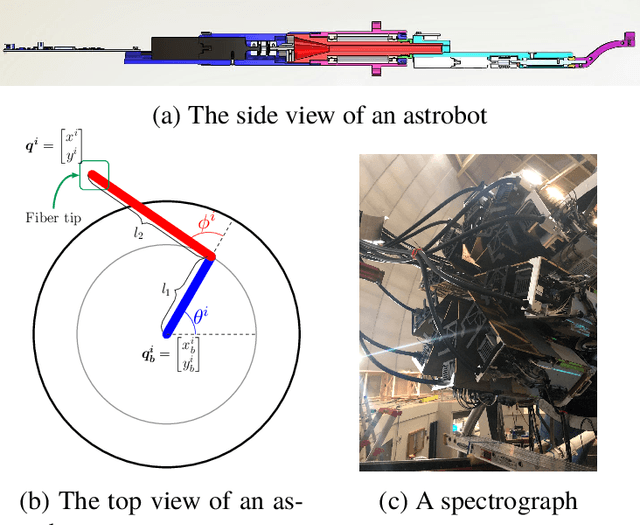

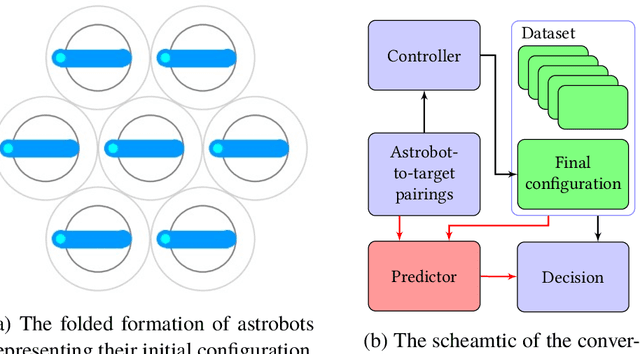

Abstract:Astrobots are robotic artifacts whose swarms are used in astrophysical studies to generate the map of the observable universe. These swarms have to be coordinated with respect to various desired observations. Such coordination are so complicated that distributed swarm controllers cannot always coordinate enough astrobots to fulfill the minimum data desired to be obtained in the course of observations. Thus, a convergence verification is necessary to check the suitability of a coordination before its execution. However, a formal verification method does not exist for this purpose. In this paper, we instead use machine learning to predict the convergence of astrobots swarm. In particular, we propose a weighted $k$-NN-based algorithm which requires the initial status of a swarm as well as its observational targets to predict its convergence. Our algorithm learns to predict based on the coordination data obtained from previous coordination of the desired swarm. This method first generates a convergence probability for each astrobot based on a distance metric. Then, these probabilities are transformed to either a complete or an incomplete categorical result. The method is applied to two typical swarms including 116 and 487 astrobots. It turns out that the correct prediction of successful coordination may be up to 80% of overall predictions. Thus, these results witness the efficient accuracy of our predictive convergence analysis strategy.
Complete coordination of robotic fiber positioners for massive spectroscopic surveys
May 21, 2020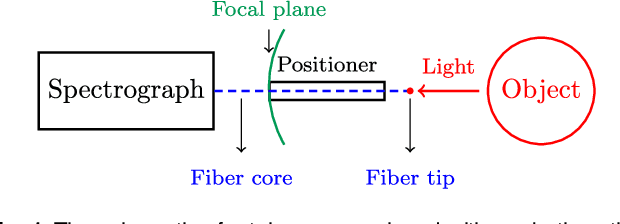

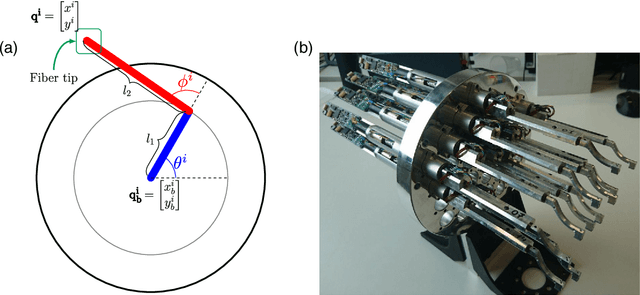
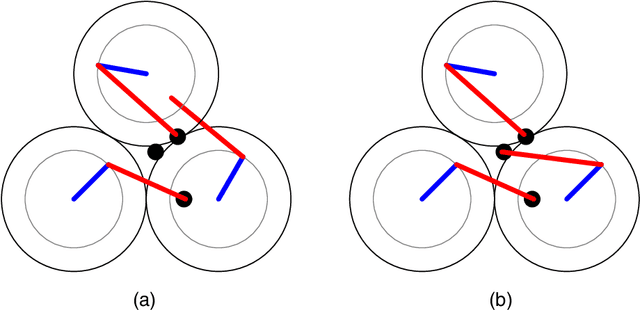
Abstract:Robotic fiber positioners play a vital role in the generation of massive spectroscopic surveys. The more complete a positioners set is coordinated, the more information its corresponding spectrograph receives during an observation. The complete coordination problem of positioners sets is studied in this paper. We first define the local and the global completeness problems and determine their relationship. We then propose a new artificial potential field according to which the convergences of a positioner and its neighboring positioners are cooperatively taken into account. We also discover the required condition for a complete coordination. We finally explain how the modifications of some of the parameters of a positioners set may resolve its incompleteness coordination scenarios. We verify our accomplishments using simulations.
Optimal target assignment for massive spectroscopic surveys
May 18, 2020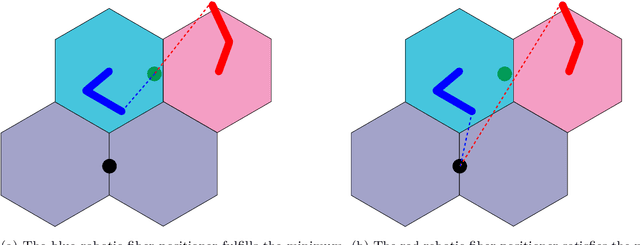
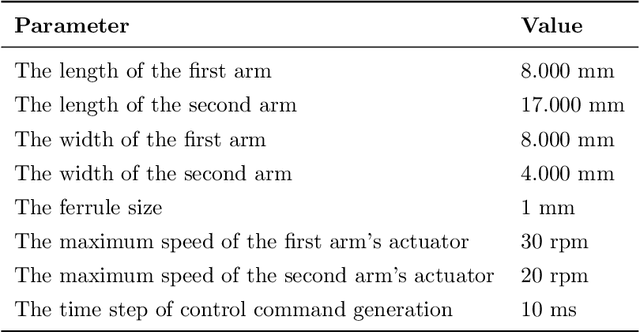
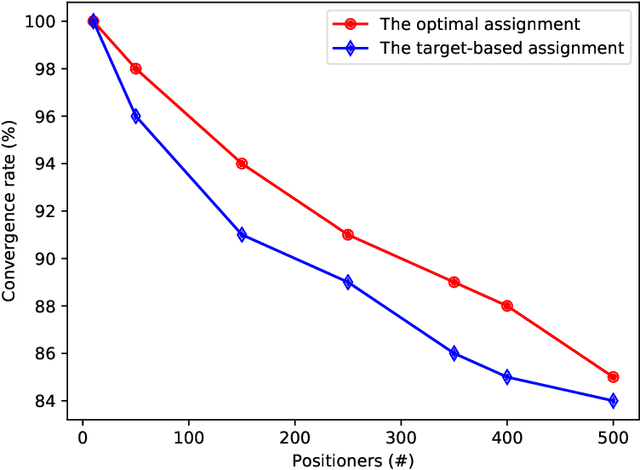
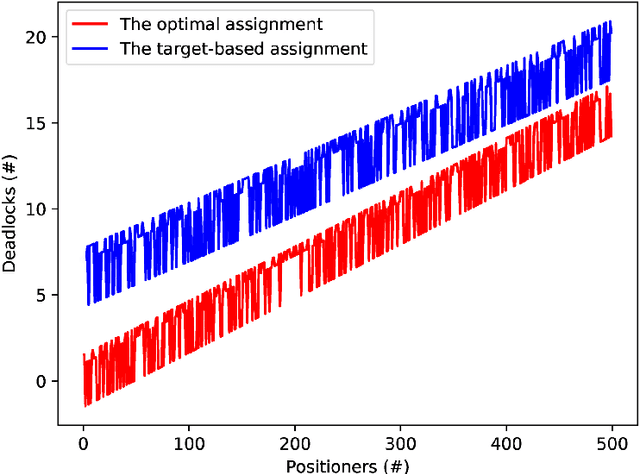
Abstract:Robotics have recently contributed to cosmological spectroscopy to automatically obtain the map of the observable universe using robotic fiber positioners. For this purpose, an assignment algorithm is required to assign each robotic fiber positioner to a target associated with a particular observation. The assignment process directly impacts on the coordination of robotic fiber positioners to reach their assigned targets. In this paper, we establish an optimal target assignment scheme which simultaneously provides the fastest coordination accompanied with the minimum of colliding scenarios between robotic fiber positioners. In particular, we propose a cost function by whose minimization both of the cited requirements are taken into account in the course of a target assignment process. The applied simulations manifest the improvement of convergence rates using our optimal approach. We show that our algorithm scales the solution in quadratic time in the case of full observations. Additionally, the convergence time and the percentage of the colliding scenarios are also decreased in both supervisory and hybrid coordination strategies.
 Add to Chrome
Add to Chrome Add to Firefox
Add to Firefox Add to Edge
Add to Edge